Albert Spencer, 7th Earl Spencer
Last updatedThe Earl Spencer | |
|---|---|
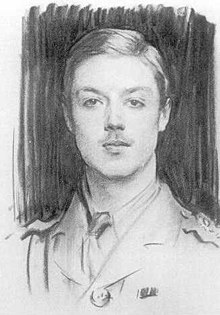 Albert Spencer, Viscount Althorp, in WW1 uniform. Painted by John Singer Sargent, in 1915. | |
| Born | Albert Edward John Spencer 23 May 1892 London, England |
| Died | 9 June 1975 (aged 83) Northampton, Northamptonshire, England |
| Education | Harrow School Trinity College, Cambridge |
| Known for | Paternal grandfather of Diana, Princess of Wales |
| Spouse | |
| Children | Lady Anne Wake-Walker John Spencer, 8th Earl Spencer |
| Parent(s) | Charles Spencer, 6th Earl Spencer Margaret Baring |
| Relatives | Diana, Princess of Wales (granddaughter) |
| Military career | |
| Allegiance | United Kingdom |
| Service/ | British Army |
| Years of service | 1914–1924 |
| Rank | Captain |
| Unit | 1st Life Guards |
| Battles/wars | World War I |
Albert Edward John Spencer, 7th Earl Spencer, TD , FSA , FRSA (23 May 1892 – 9 June 1975), styled The Honourable Albert Spencer until 1910 and Viscount Althorp from 1910 to 1922, and known less formally as Jack Spencer, was a British peer. He was the paternal grandfather of Diana, Princess of Wales.
Contents
Early life
Lord Spencer was born in London, the son of Charles Spencer, 6th Earl Spencer, and his wife, the former Margaret Baring, second daughter of Edward Baring, 1st Baron Revelstoke. [1] His godparents included Edward VII. [2]
He was educated at Harrow School and Trinity College, Cambridge, [3] where he was a friend of Lionel Lupton, who studied the same subject at Trinity. They signed up together to fight in World War I. Lupton's sister Olive Middleton was the great grandmother of Catherine Middleton [4] who married the great-grandson of Lord Spencer, Prince William, in April 2011.
Career
On 5 August 1914, Spencer was commissioned as a second lieutenant in the 1st Regiment of Life Guards, [5] was promoted to lieutenant on 21 October 1914, [6] appointed an aide-de-camp on 9 May 1917, [7] and promoted to captain on 15 June 1917. [8] When 1st Life Guards merged with the 2nd Life Guards on 18 November 1922, Spencer was appointed a captain in the new regiment. [9] He retired from the army on 20 September 1924, [10] but remained a member of the Regular Army Reserve of Officers until reaching the mandatory retirement age on 2 June 1943. [11]
On 27 August 1924, Lord Spencer was appointed the Honorary Colonel of the 4th (Territorial) Battalion, Northamptonshire Regiment, [12] remaining in that role when it was renamed 50th (Northampton Regiment) Anti-Aircraft Battalion on 1 October 1937, [13] and throughout its various post-war incarnations [14] until finally relinquishing his appointment on 1 April 1967. [15] He was awarded the Territorial Efficiency Decoration on 12 September 1944, [16] with two clasps on 20 November 1953. [17]
On 9 April 1935, Lord Spencer was appointed a Deputy Lieutenant of Northamptonshire, [18] and became Lord Lieutenant of Northamptonshire on 11 March 1952, [19] serving until 31 July 1967. [20] He was made a knight of the Order of St. John of Jerusalem on 1 July 1955. [21]
Lord Spencer was active in the local politics of Northamptonshire as a Conservative councillor. He opened his ancestral home, Althorp, to the public and was a well-known art connoisseur, being a trustee of the Wallace Collection and chairman of the Royal School of Needlework. [22] He was a Fellow of both the Society of Antiquaries of London and the Royal Society of Arts, and for eight years in the 1960s he was Chair of the Advisory Council of the Victoria and Albert Museum. [3] He was Chairman of the Governors at Wellingborough School from 1946 to 1972.
Personal life
Lord Spencer married Lady Cynthia Hamilton, second daughter of the 3rd Duke of Abercorn, on 26 February 1919 at St. James's Church in Piccadilly, London, and they had two children:
- Lady Anne Spencer (4 August 1920 – 24 February 2020) [23] married in 1944 to Captain Christopher Wake-Walker (1920–1998), son of Admiral Sir Frederic Wake-Walker, had issue.
- John Spencer, 8th Earl Spencer (24 January 1924 – 29 March 1992).
Lord Spencer died at St Matthews Nursing Home, Northampton, after a short illness, [24] and was succeeded by his son, John, the father of Diana, Princess of Wales.
Coat of arms
 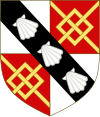 |
|
Ancestry
| Ancestors of Albert Spencer, 7th Earl Spencer | |||||||||||||||||||||||||||||||||||||||||||||||||||||||||||||||||||||||||||||||||||||||||||||||||||||||||||||||||||||||||||||||||||||||||||||||||||||||||||||||||||||||||||||||||||||||||||||||||||||||||||||||||||||||||||||||||||||||||||||||||||||||||||||||||||||||||||||||||||||||||
|---|---|---|---|---|---|---|---|---|---|---|---|---|---|---|---|---|---|---|---|---|---|---|---|---|---|---|---|---|---|---|---|---|---|---|---|---|---|---|---|---|---|---|---|---|---|---|---|---|---|---|---|---|---|---|---|---|---|---|---|---|---|---|---|---|---|---|---|---|---|---|---|---|---|---|---|---|---|---|---|---|---|---|---|---|---|---|---|---|---|---|---|---|---|---|---|---|---|---|---|---|---|---|---|---|---|---|---|---|---|---|---|---|---|---|---|---|---|---|---|---|---|---|---|---|---|---|---|---|---|---|---|---|---|---|---|---|---|---|---|---|---|---|---|---|---|---|---|---|---|---|---|---|---|---|---|---|---|---|---|---|---|---|---|---|---|---|---|---|---|---|---|---|---|---|---|---|---|---|---|---|---|---|---|---|---|---|---|---|---|---|---|---|---|---|---|---|---|---|---|---|---|---|---|---|---|---|---|---|---|---|---|---|---|---|---|---|---|---|---|---|---|---|---|---|---|---|---|---|---|---|---|---|---|---|---|---|---|---|---|---|---|---|---|---|---|---|---|---|---|---|---|---|---|---|---|---|---|---|---|---|---|---|---|---|---|---|---|---|---|---|---|---|---|---|---|---|---|---|---|---|---|
| |||||||||||||||||||||||||||||||||||||||||||||||||||||||||||||||||||||||||||||||||||||||||||||||||||||||||||||||||||||||||||||||||||||||||||||||||||||||||||||||||||||||||||||||||||||||||||||||||||||||||||||||||||||||||||||||||||||||||||||||||||||||||||||||||||||||||||||||||||||||||
Related Research Articles
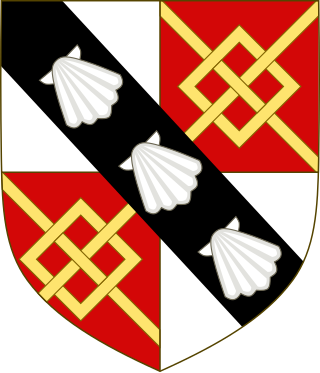
The Spencer family is an aristocratic family in the United Kingdom. From the 16th century, its members have held numerous titles including the dukedom of Marlborough, the earldoms of Sunderland and Spencer, and the Churchill barony. Two prominent members of the family during the 20th century were Sir Winston Churchill and Diana, Princess of Wales.

Althorp is a Grade I listed stately home and estate in the civil parish of Althorp, in West Northamptonshire, England of about 13,000 acres (5,300 ha). By road it is about 6 miles (9.7 km) northwest of the county town of Northampton and about 75 miles (121 km) northwest of central London, situated between the villages of Great Brington and Harlestone. It has been held by the prominent aristocratic Spencer family for more than 500 years, and has been owned by Charles Spencer, 9th Earl Spencer since 1992. It was also the home of Lady Diana Spencer from her parents' divorce until her marriage to Charles, Prince of Wales.
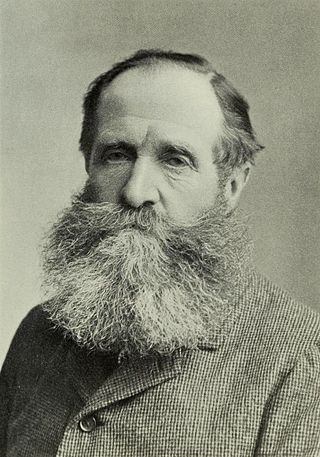
John Poyntz Spencer, 5th Earl Spencer, KG, KP, PC, known as Viscount Althorp from 1845 to 1857, was a British Liberal Party politician under, and close friend of, prime minister William Ewart Gladstone. He was twice Lord Lieutenant of Ireland.
Earl Spencer is a title in the Peerage of Great Britain that was created on 1 November 1765, along with the title Viscount Althorp, of Althorp in the County of Northampton, for John Spencer, 1st Viscount Spencer. He was a member of the prominent Spencer family and a great-grandson of the 1st Duke of Marlborough. Previously, he had been created Viscount Spencer, of Althorp in the County of Northampton, and Baron Spencer of Althorp, of Althorp in the County of Northampton, on 3 April 1761.

John Charles Spencer, 3rd Earl Spencer,, styled Viscount Althorp from 1783 to 1834, was a British statesman and abolitionist. He was Chancellor of the Exchequer under Lord Grey and Lord Melbourne from 1830 to 1834. Due to his reputation for integrity, he was nicknamed "Honest Jack".

Frederick Spencer, 4th Earl Spencer, KG, CB, PC, styled The Honourable Frederick Spencer until 1845, was a British naval commander, courtier, and Whig politician. He initially served in the Royal Navy and fought in the Napoleonic Wars and the Greek War of Independence, eventually rising to the rank of Vice-Admiral. He succeeded his elder brother as Earl Spencer in 1845 and held political office as Lord Chamberlain of the Household between 1846 and 1848 and as Lord Steward of the Household between 1854 and 1857. In 1849 he was made a Knight of the Garter.
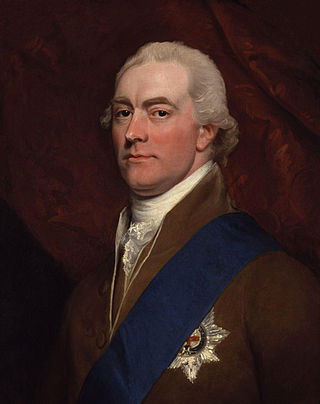
George John Spencer, 2nd Earl Spencer,, styled Viscount Althorp from 1765 to 1783, was a British Whig politician. He served as Home Secretary from 1806 to 1807 in the Ministry of All the Talents. He was also the father of The Venerable Father Ignatius Spencer, a Roman Catholic convert to the priesthood.

John Fane, 10th Earl of Westmorland,, styled Lord Burghersh between 1771 and 1774, was a British Tory politician of the late 18th and early 19th centuries, who served in most of the cabinets of the period, primarily as Lord Privy Seal.

Edward John Spencer, 8th Earl Spencer,, styled Viscount Althorp until June 1975, was a British nobleman, military officer, and courtier. He was the father of Diana, Princess of Wales, and the maternal grandfather of William, Prince of Wales, and Prince Harry, Duke of Sussex.
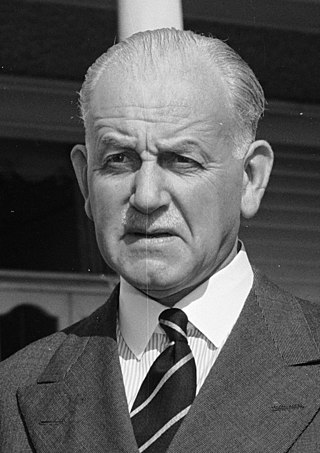
Lieutenant-General Charles Willoughby Moke Norrie, 1st Baron Norrie,, was a senior officer of the British Army who fought in both World Wars, following which he served terms as Governor of South Australia and the eighth Governor-General of New Zealand.

Charles Edward Maurice Spencer, 9th Earl Spencer,, styled Viscount Althorp between 1975 and 1992, is a British peer, author, journalist, and broadcaster. He is the younger brother of Diana, Princess of Wales, and is the maternal uncle of William, Prince of Wales and Prince Harry, Duke of Sussex.

Charles Robert Spencer, 6th Earl Spencer,, styled The Honourable Charles Spencer until 1905 and known as Viscount Althorp between 1905 and 1910, was a British courtier and Liberal politician from the Spencer family. An MP from 1880 to 1895 and again from 1900 to 1905, he served as Vice-Chamberlain of the Household from 1892 to 1895. Raised to peerage as Viscount Althorp in 1905, he was Lord Chamberlain from 1905 to 1912 in the Liberal administrations headed by Sir Henry Campbell-Bannerman and H. H. Asquith. In 1910, he succeeded his half-brother as Earl Spencer. He was married to Margaret Baring, a member of the Baring family.

Hugh Algernon Percy, 10th Duke of Northumberland, styled Lord Hugh Percy between 1918 and 1940, was a British landowner, soldier and peer. He was the son of Alan Percy, 8th Duke of Northumberland, and Lady Helen Gordon-Lennox. He succeeded to the dukedom of Northumberland in 1940 when his brother, the 9th Duke, was killed in action in World War II.
Below is a list of people who have served as Lord Lieutenant of Northamptonshire. Since 1735, all Lords Lieutenant have also been Custos Rotulorum of Northamptonshire. The lieutenancy included the Soke of Peterborough until 1965, when the Lord Lieutenant of Huntingdonshire became Lord Lieutenant of Huntingdon and Peterborough. This merged with the lieutenancy of Cambridgeshire and Isle of Ely in 1974, forming the jurisdiction of the present Lord Lieutenant of Cambridgeshire.

Cynthia Ellinor Beatrix Spencer, Countess Spencer was a British peeress and the paternal grandmother of Diana, Princess of Wales.
Lieutenant-Colonel William Legge, 7th Earl of Dartmouth, styled Viscount Lewisham between 1891 and 1936, was a British peer and Conservative politician, who was Acting Lord Great Chamberlain 1928–36.

Thomas William Coke, 4th Earl of Leicester, was a British peer and Army officer, styled Viscount Coke from 1909 to 1941.

Lieutenant-Colonel Anthony Mildmay Julian Fane, 13th Earl of Westmorland, CBE, JP, styled Lord Burghersh between October 1859 and 1891, was a British peer.
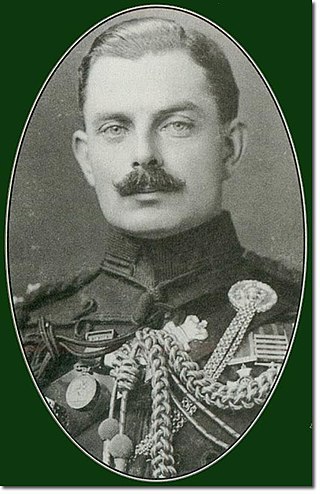
Major-general Sir Hereward Wake, 13th Baronet, was a British Army officer. Born into an historic and noble family, he joined the King's Royal Rifle Corps (KRRC) as a second lieutenant in 1897. He served on the staff during the Second Boer War, and was awarded the Distinguished Service Order. During the First World War, he served again as a staff officer with the British Expeditionary Force. In 1917 he was promoted to the temporary rank of brigadier-general and appointed to the secretariat of the Supreme War Council (SWC). Wake led E Branch, responsible for advising the British military representative, General Sir Henry Wilson on enemy strength and supply. Wake's unit predicted the 1918 German spring offensive but countermeasures recommended by the SWC were ignored by the British commander-in-chief Field Marshal Sir Douglas Haig. Towards the end of the war Wake predicted that Germany would remain the predominant military power in Europe.
References
- ↑ Williamson, D. (1981). "The Ancestry of Lady Diana Spencer". Genealogist's Magazine. 20 (6 & 8): 192–199 & 281–282.
- ↑ Mosley, C., ed. (2003). Burke's Peerage, Baronetage & Knightage. Vol. 3 (107th ed.). Stokesley, North Yorkshire: Burke's Peerage & Gentry (UK) Ltd. p. 3695.
- 1 2 Who was Who, 1971–1980. London: Adam & Charles Black. 1981. p. 746.
- ↑ Gutteridge, Nick (2 July 2016). "Kate's hero relative died at the Somme after signing up to fight alongside Diana's grandad". Daily Express . Retrieved 2 July 2016.
- ↑ "No. 28860". The London Gazette. 4 August 1914. p. 6073.
- ↑ "No. 29042". The London Gazette (Supplement). 15 January 1915. p. 583.
- ↑ "No. 30058". The London Gazette (Supplement). 8 May 1917. p. 4443.
- ↑ "No. 30132". The London Gazette (Supplement). 15 June 1917. p. 5944.
- ↑ "No. 32768". The London Gazette. 17 November 1922. pp. 8111–8112.
- ↑ "No. 32975". The London Gazette. 19 September 1924. p. 6907.
- ↑ "No. 36037". The London Gazette (Supplement). 28 May 1943. p. 2520.
- ↑ "No. 32968". The London Gazette. 26 August 1924. p. 6423.
- ↑ "No. 34440". The London Gazette. 1 October 1937. p. 6081.
- ↑ "No. 42317". The London Gazette (Supplement). 31 March 1961. p. 2493.
- ↑ "No. 44283". The London Gazette (Supplement). 4 April 1967. p. 3809.
- ↑ "No. 36710". The London Gazette (Supplement). 19 September 1944. p. 4371.
- ↑ "No. 40023". The London Gazette (Supplement). 20 November 1953. pp. 6366–6367.
- ↑ "No. 34150". The London Gazette. 12 April 1935. p. 2515.
- ↑ "No. 39491". The London Gazette. 14 March 1952. p. 1468.
- ↑ "No. 44380". The London Gazette (Supplement). 4 August 1967. p. 8600.
- ↑ "No. 40529". The London Gazette. 5 July 1955. p. 3881.
- ↑ "Lord Spencer". The Times. London. 12 June 1975. col F, p. 20.
- ↑ "WAKE-WALKER - Deaths Announcements - Telegraph Announcements". announcements.telegraph.co.uk. Archived from the original on 10 October 2020. Retrieved 18 November 2020.
- ↑ "Lord Spencer". The Times. London. 10 June 1975. col B, p. 30.